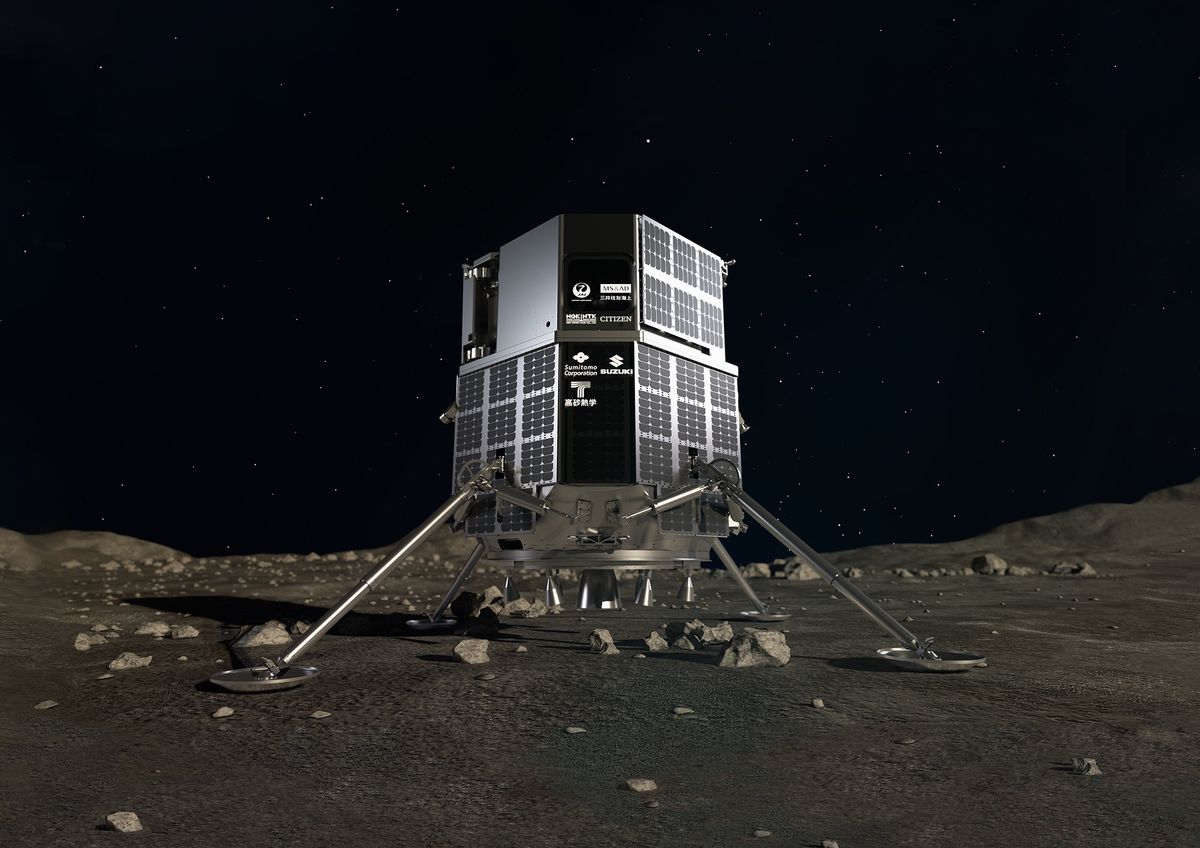The moon is about to get some new visitors.
A lander developed by Tokyo-based company ispace and a small rover for the United Arab Emirates are now almost ready for their voyage to Earth’s nearest neighbor.
The Japanese Hakuto-R lander and UAE’s Rashid 1 rover are due to launch between Nov. 9 and Nov. 15 from NASA’s Kennedy Space Center in Florida aboard a SpaceX Falcon 9 rocket, according to a report from UAE-based state-linked media The National (opens in new tab).
Lunar timeline: Humanity’s exploration of the moon
The combined spacecraft will be taking a low-energy route to the moon rather than a direct approach, according to ispace, meaning the landing will take around five months after launch, in March 2023.
The landing will target Lacus Somniorum, or the “Lake of Dreams,” a mid-latitude basaltic plain.
The Rashid 1 rover was developed by the Mohammed Bin Rashid Space Center in Dubai. At 22 pounds (10 kilograms), it would be the smallest rover to land on the moon and is expected to operate on the surface for a single lunar day.
The four-wheeled, 21-by-21 inch (53 by 53 centimeters) solar-powered rover carries a pair of high-resolution cameras, a thermal imager, a microscopic imager, and an instrument for investigating the electrically charged environment at the lunar surface.
The UAE, which already has a Mars orbiter, does not have its own lunar landing capabilities and has contracted the private Japanese firm ispace to fulfill that role.
“This is a historic mission,” Jumpei Nozaki, director and chief financial officer of ispace, told Space.com. “There are not many privately funded companies doing this kind of mission. So I think it’s really important to prove that such a private company can do this.”
“This is a proof of concept mission. First of all, in terms of technology. But also we also want to prove that we are providing a service,” Nozaki said.
The lander is currently in Germany undergoing final testing before shipping to the U.S. for launch.
The Hakuto-R lander will be flying on ispace’s first mission and will seek to demonstrate capabilities as well. It will carry out lunar transportation or lunar data acquisition services for three Canadian companies. Other payloads include a two-wheeled micro rover for the Japan Aerospace Exploration Agency (JAXA).
The firm is also working on its Mission 2, set for launch in 2024, and Mission 3, for 2025, which will use a second-generation lander.
Hakuto-R may not be the first Japanese lander on the moon, however. NASA’s Artemis 1 mission carries among its 10 payloads a small JAXA lander weighing about 30 pounds (14 kg) that will attempt a controlled lunar landing. NASA hopes to launch the uncrewed Artemis 1 test flight as soon as next week, though that schedule assumes that team members managed to fix a troublesome leak of liquid hydrogen propellant on the mission’s Space Launch System rocket.
The UAE and China also recently announced a partnership to put the Rashid 2 lander on the moon as part of China’s Chang’e 7 lunar south pole landing mission, currently scheduled for 2026.
Follow us on Twitter @Spacedotcom (opens in new tab) or on Facebook (opens in new tab).




